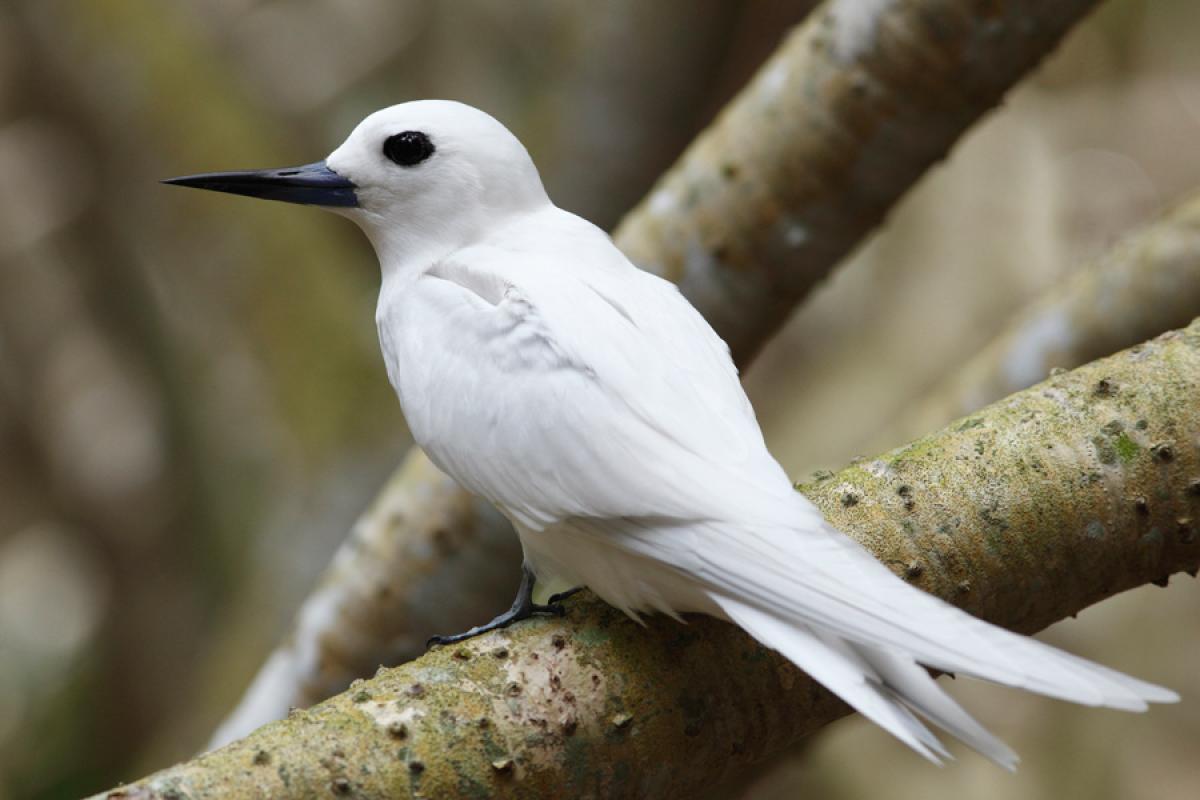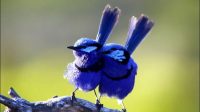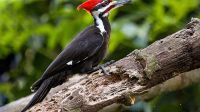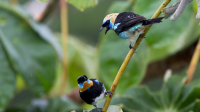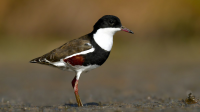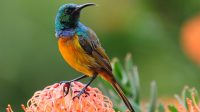The Benefits of Not Migrating
Migration is a perilous journey, and birds that don’t undertake a significant migration avoid the hazards that come with moving from one place to another, including predation, hunting, habitat loss, storms, and more. But other than just avoiding those risks, there are many good reasons birds have for not migrating, including:
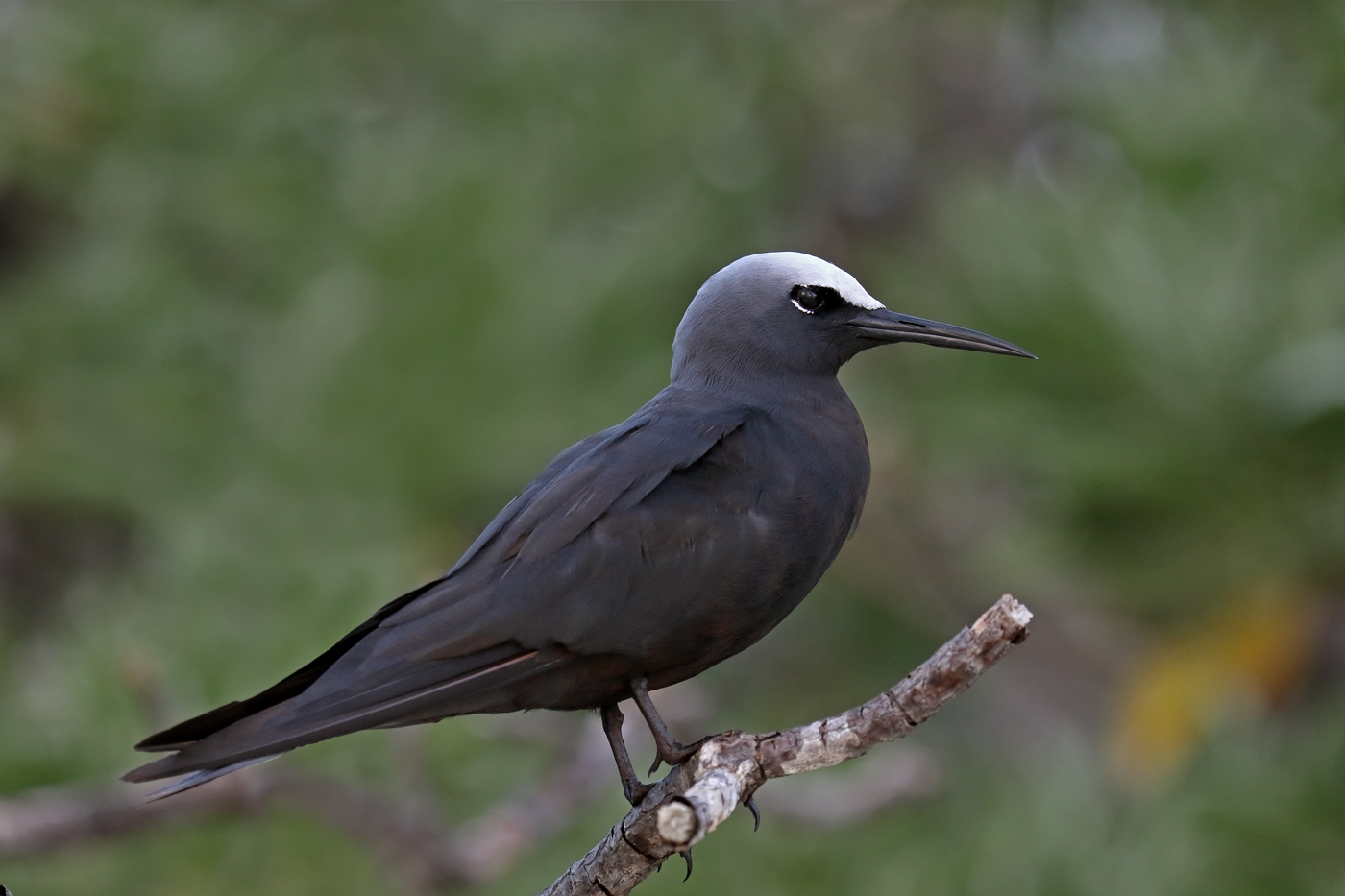
- Saving Energy Birds that don’t migrate don’t need to expend massive amounts of energy to travel. Instead, their energy can be used to forage, watch for predators, defend their territory, preen, continue raising chicks, and other tasks that benefit their survival.
- Defending Territory The best feeding and nesting areas are highly sought after, but a bird has to be present to defend them. Birds that don’t migrate can make use of those superior habitats throughout the year and are already in place to defend them when migrating birds return each spring.
- Nurturing Young If a bird does not need to migrate, it can spend more time caring for its chicks. This extra parental care gives young birds a better chance of survival so they mature strong and healthy. Some non-migrating birds may also raise additional broods later in the season, giving them even more offspring to continue the next generation.
Birds do not consciously choose not to migrate, of course, as migration is an inherent, instinctive behavior. Just as some birds have evolved the ability to precisely navigate their way through this extraordinary journey, however, some birds have also evolved to make the most of not migrating at all.
What Birds Don’t Migrate
There are many more birds that don’t migrate than most birders realize, and at least some species in nearly all scientific bird families avoid the rigors of migration. Just in North America, some of the more familiar birds that do not migrate include:
- Scavenging birds of prey, including black vultures and crested caracaras
- Numerous woodpeckers, including hairy, downy, red-bellied, and pileated woodpeckers
- Several owls, such as great horned owls, barred owls, and screech-owls
- Game birds such as wild turkeys, ring-necked pheasants, chukars, quail, and sage-grouse
- Tits and chickadees, including Carolina chickadees, black-capped chickadees, and tufted titmice
- Hardy corvids, including blue jays, gray jays, common ravens, and black-billed magpies
- Unexpected songbirds like northern cardinals, northern mockingbirds, and verdins
- The Anna’s hummingbird, the most widespread year-round hummingbird in the United States
These are just some of the North American birds that do not migrate. Many others migrate only slightly but occupy a large core of their range year-round, even though fringe populations migrate. In other parts of the world, similar bird families migrate very little, such as tits, woodpeckers, corvids, game birds, and scavengers.

How Birds Adapt to Not Migrating
Because migration is a key part of birds’ survival, birds that don’t migrate must adapt to survive in the same range year-round. While different species adapt differently depending on their needs and the conditions of their range, typical adaptations birds may have instead of migrating include:
- Changing Food Preferences When a bird doesn’t migrate to an area with richer food sources, it must adapt to thrive on foods that are available in different seasons. Birds that don’t migrate may eat buds, insects, berries, and seeds in spring and summer, switching to fruit and nuts in fall and winter when other food sources are exhausted. Bird feeders can be a big part of a bird’s winter diet when other foods are scarce, but they still rely on a wide range of naturally available winter foods.
- Caching Food Birds that stay in the same area year-round often cache food in late summer and autumn, hiding supplies of seeds and nuts in protected areas so they can retrieve those snacks later. Choice tidbits may be tucked under bark or wedged into tree crevices, while some birds bury their foods instead. Many jays are masters of caching food and will hide hundreds of nuts before winter arrives. Nuts and seeds that aren’t eaten may sprout and grow into grasses, shrubs, and trees to replenish habitat.
- Molting Some birds that stay year-round in extreme northern habitats will molt in late summer and early fall. At that time, they will gain an extra protective layer of insulating down feathers to help preserve body heat and protect them from extreme cold. In the spring, these birds may molt again to a brighter breeding plumage or just to shed the excess feathers.
- Bold Personalities Birds that don’t migrate often have more aggressive, dominant personalities. They are curious and intelligent, and will investigate new objects as a possible source of food or shelter. This helps these birds defend territories from hungry intruders, seek out unusual resources such as roosting in unique spaces, and be willing to try new foods or visit feeders more often.
- Mixed Flocks Many birds that stay in the same range year-round will combine forces in mixed flocks to forage during the winter. While this does raise the competition for any food that is found, these birds often have slightly different foraging techniques that minimize aggression. With more eyes searching for food, the flock will benefit from extra members. Many smaller birds, such as chickadees, wrens, nuthatches, and downy woodpeckers, flock together in winter.
- Communal Roosting Birds that roost together have a better chance of surviving a sudden overnight cold snap because of their shared body heat. Many small birds that don’t migrate, such as tits and chickadees, will crowd into any available cavity for overnight roosting, and winter bird roost boxes are ideal to provide that shelter.
Many people mistakenly believe that all birds migrate. Once you recognize the benefits birds get from staying in the same range, however, you will notice the unique adaptations year-round residents have to survive without long journeys and you’ll be ready to enjoy these birds in every season.



